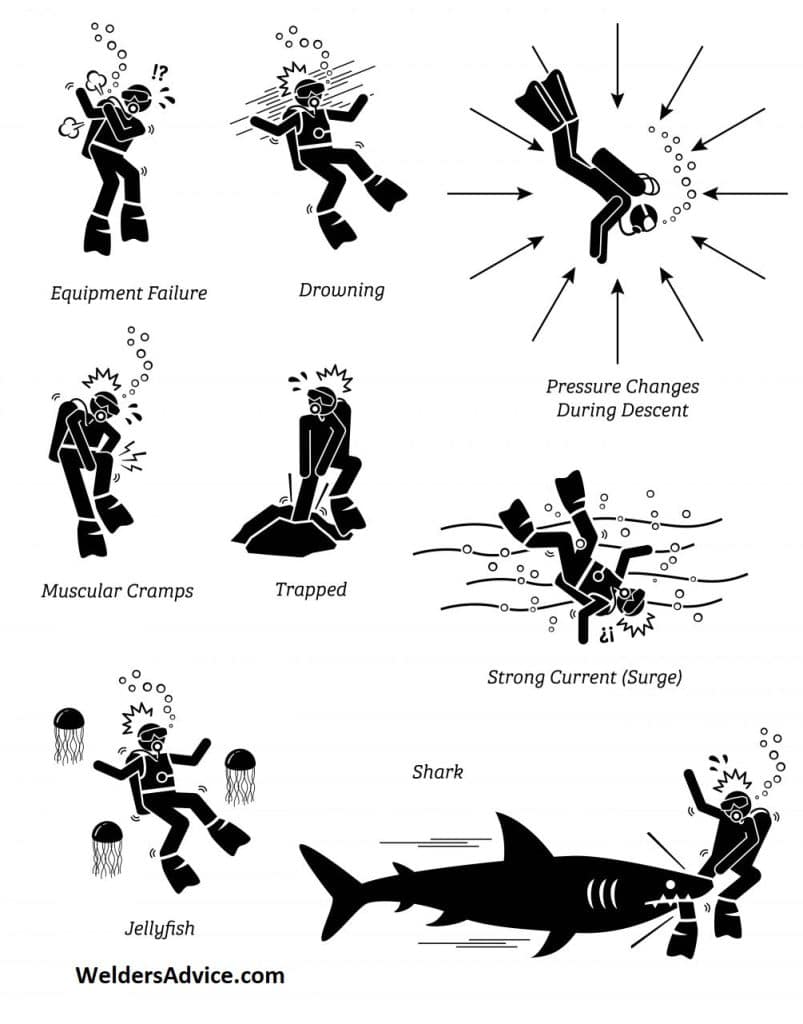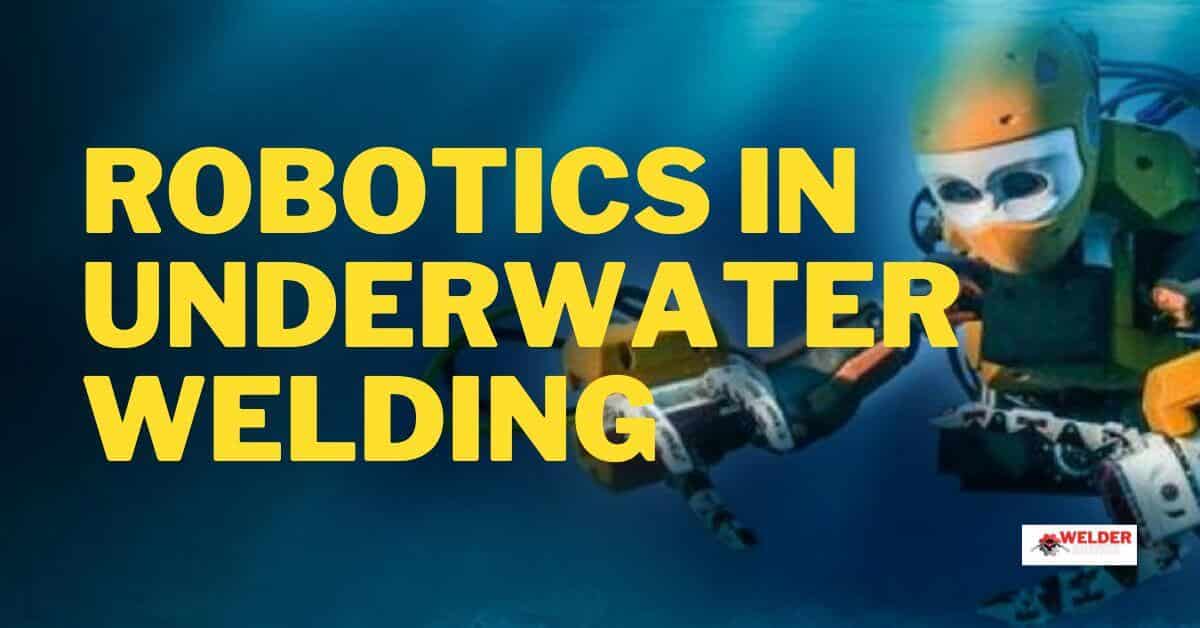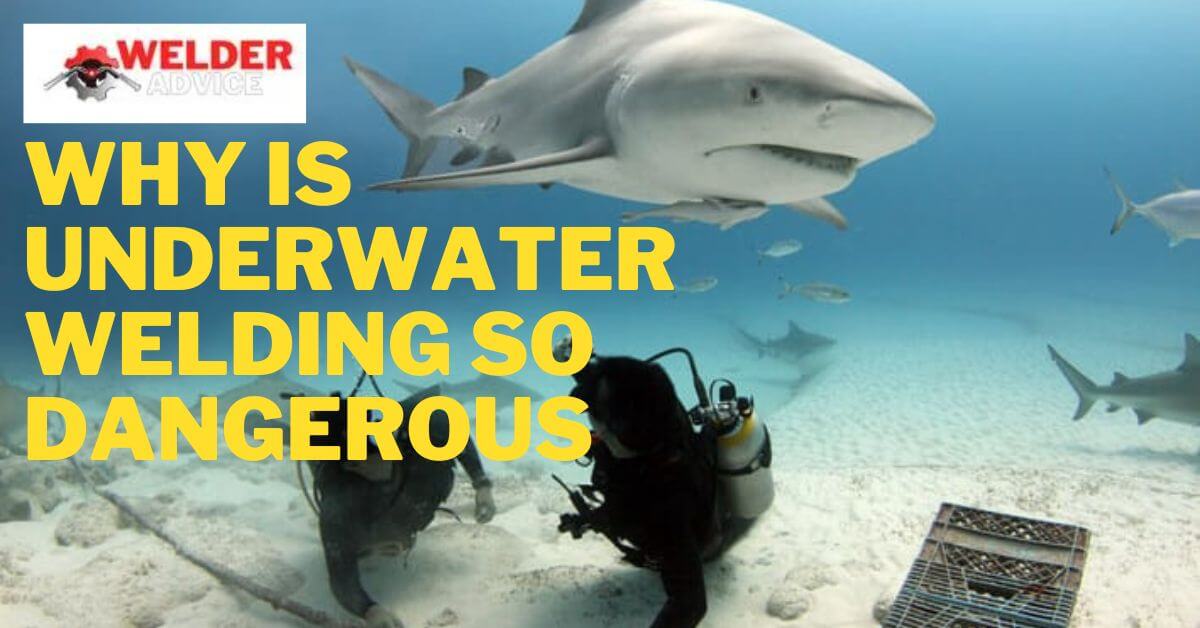Underwater welding is a challenging and potentially dangerous job, with a higher death rate than many other types of welding. However, who can significantly reduce the risks associated with underwater welding with proper training and safety measures? This article will explore the Underwater Welder Death Rate and the steps you can take to ensure the safety of those working in this field.
Underwater Welder Death Rate
Divers in the United States die at a rate of approximately 20 deaths per 100,000 workers each year, according to the Occupational Safety and Health Administration (OSHA). By comparison, the death rate for all occupations in the United States is 3.5 deaths per 100,000 workers per year. It means divers, including those who perform underwater welding, are at a much higher risk of death than the average worker.
Underwater welding is associated with a higher mortality rate for several reasons. One of the leading causes of death among divers is drowning due to equipment failure or being separated from the air supply. Among the other risks are hypothermia, nitrogen narcosis, and decompression sickness.
Safety Measures for Underwater Welding
Despite the inherent risks of the job, you can take several measures to ensure the safety of those working in underwater welding. These include:
- Providing thorough training and certification for divers and underwater welders
- Regularly maintaining and testing diving equipment
- Developing and implementing emergency procedures
- Establishing clear communication between divers and surface support staff
- Using safety lines and other protective measures to prevent divers from drifting away
- It is also important for employers to have a comprehensive safety program in place and to regularly review and update their safety procedures to ensure that they are effective and in line with industry standards.
The Dangers and Injuries of Underwater Welding
Underwater welding is a specialized and highly skilled form that occurs below the water’s surface. It is used in various industries to repair and maintain structures and equipment, including offshore oil and gas, marine construction, and naval shipbuilding.
However, underwater welding also has a unique set of dangers and risks that can lead to serious injuries or even death for welders. We will also discuss prevention and mitigation strategies that can help minimize the likelihood of these injuries occurring.
The Risks of Underwater Welding
There are several dangers that welders must face when performing underwater welding tasks. These risks can be divided into two categories: external and internal.
External Risks
External risks refer to hazards from the external environment where the welding occurs. Some examples of external risks include:
Drowning
One of the most obvious risks of underwater welding is the risk of drowning. Welders must be highly skilled swimmers and be able to use specialized diving equipment to perform their duties safely.
Cold water
Cold water can pose several dangers to welders, including hypothermia and frostbite. Welders must be properly protected from the cold to prevent these conditions from occurring.
Underwater currents
Strong underwater currents can make it difficult for welders to maintain their position and stability while working. Accidents and injuries can occur as a result.
Underwater debris
Debris, such as rocks, shipwrecks, and other debris on the ocean floor, can pose a hazard to welders. Welders must be aware of their surroundings and take precautions to avoid these dangers.
Marine life
Welders may also encounter marine life while working underwater, such as sharks, jellyfish, and other dangerous creatures. It would be best if you took measures to protect welders from these hazards.
Internal Risks
Internal risks refer to hazards that come from the welding process itself. Some examples of internal risks include:
Gas toxicity
Welding generates harmful gases such as carbon monoxide and nitrogen dioxide. These gases can build up inside the diver’s breathing apparatus and cause serious health issues or even death.
Electric shock
Underwater welding involves high-voltage electricity, which can pose a risk of electric shock to the welder. It would be best to take proper safety measures to prevent this hazard.
Fire
Welding also carries the risk of fire, which can be especially dangerous underwater. You must train welders to prevent fires and protect themselves and their colleagues.
Also Read: How Much Do Oil Rig Welders Make
Common Injuries in Underwater Welding

Given the risks involved in underwater welding, it is not surprising that welders are at risk of suffering serious injuries. Some of the most common injuries that can result from underwater welding accidents include:
Drowning
As mentioned previously, drowning is a major risk in underwater welding. In the event of disorientation or separation from their breathing apparatus, welders who are not properly trained or equipped may drown.
Hypothermia
Cold water can cause the body’s core temperature to drop, leading to hypothermia. Symptoms of hypothermia include shivering, difficulty speaking, and confusion. Severe hypothermia can lead to coma and death.
Frostbite
Cold water can also cause frostbite, in which the skin and underlying tissues freeze. Numbness and tingling are common symptoms of frostbite. Severe frostbite can result in amputation.
Electric shock
It is possible to suffer burns, muscle spasms, and even die from electric shock. Welders who come into contact with high-voltage electricity may be at risk of electric shock.
Gas toxicity
Inhaling harmful gases such as carbon monoxide and nitrogen dioxide can cause serious health issues, including dizziness, nausea, and even death. Welders not properly protected from these gases may be at risk of gas toxicity.
Prevention and Mitigation Strategies
Given the risks and dangers of underwater welding, welders and their employers need to take steps to minimize the likelihood of accidents and injuries. Some strategies that can help prevent and mitigate the risks of underwater welding include:
Proper training
They must properly train welders in the skills and techniques needed to perform underwater welding tasks safely. It should include training in the use of diving equipment, welding techniques, and emergency procedures.
Use of protective equipment
Welders should be provided with and required to use appropriate protective equipment, such as diving suits, helmets-mounted respirators, and gloves, to help prevent injuries and accidents.
Risk assessment
Employers should conduct regular risk assessments to identify potential hazards and implement controls to minimize the risks to welders.
Emergency procedures
Employers should have clear emergency procedures in place in case of accidents or injuries, including rescue and first aid procedures.
Life Expectancy of Underwater Welders
The life expectancy of underwater welders can be affected by a variety of factors, including the risks associated with working in extreme conditions and the hazards of the welding process itself.
One of the biggest risks for underwater welders is drowning. According to the Occupational Safety and Health Administration (OSHA), drowning is the most common cause of death among underwater welders.
Hypothermia is also a major risk for underwater welders, as they are often required to work in cold water for extended periods of time. The cold water can cause the body to lose heat rapidly, leading to hypothermia, which can be fatal if not treated promptly.
Electric shock is another major risk for underwater welders, as they may come into contact with live electrical wires or equipment while working. Burns can also be caused by the intense heat of the welding process.
Decompression sickness, also known as “the bends,” can occur when welders ascend too quickly from depths of more than 20 feet. This can cause serious injury or death if not treated immediately.
Overall, the life expectancy of underwater welders can be significantly lower than that of other types of welders due to the high risks associated with this field. However, by investing in safety equipment and training, as well as conducting regular safety inspections and drills, employers can help to reduce these risks and improve the life expectancy of underwater welders.
Final Thoughts
Underwater welding is a specialized and highly skilled form of welding that plays a vital role in many industries. There are, however, a number of risks and dangers associated with welding that can result in serious injuries or even death. By preventing and mitigating these risks, employers and welders can help ensure a safe working environment and lower the Underwater Welder Death Rate to protect against accidents and injuries.






